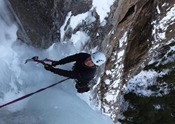Program Information
Applications of Combined KV/MV CBCT Imaging with a High-DQE MV Detector
M Bazalova-Carter1*, A Wang2, M Wu3, M Newson1, L Xing3, W Ansbacher4, R Fahrig3, J Star-Lack2, (1) University of Victoria, Victoria, BC, (2) Varian Medical Systems, Palo Alto, CA, (3) Stanford University, Stanford, CA, (4) Vancouver Island Cancer Centre, Victoria, BC
Presentations
SU-D-BRA-7 (Sunday, July 31, 2016) 2:05 PM - 3:00 PM Room: Ballroom A
Purpose: To investigate whether a high detection quantum efficiency (DQE) MV detector makes combined kV/MV CBCT clinically practical.
Methods: Combined kV/MV CBCT was studied for scan time reduction (STR) and metal artifact reduction (MAR). 6MV CBCT data (dose rate = 0.017 MU/degree) were collected using 1) a novel focused pixelated cadmium tungstate (CWO) scintillator (15mm thickness, DQE(0) = 22%, 0.784mm pixel pitch) coupled to a flat panel imager, and 2) a commercial portal imager with a 133mg/cm² gadolinium oxysulfide (GOS) screen (DQE(0) = 1.2%). The 100kVp data were acquired using a commercial imager employing a columnar cesium iodide scintillator (DQE(0) = 70%) with a dose rate of 0.0016 cGy/degree. For STR, MV and kV projections spanning 105° were combined to constitute a complete CBCT scan. Total dose was ~2cGy and acquisition time was 18s. For MAR, only the metal-corrupted pixels in the kV projections were replaced with MV data resulting in a total dose of less than 1cGy for a 360° scan. Image quality was assessed using an 18-cm diameter electron density phantom with nine tissue inserts, some of which were replaced with steel rods for MAR studies.
Results: The CWO contrast-to-noise ratio (CNR) was ~4.0x higher than the GOS CNR and was ~4.8x lower than the kV CNR when normalized for dose. When CWO MV data were combined with kV data for STR, all contrast inserts were visible, but only two were detectable in the composite kV/GOS image. Metal artifacts were greatly reduced using the kV/MV MAR technique with all contrast inserts clearly visible in the composite kV/CWO image but only two inserts visible in the composite kV/GOS image.
Conclusion: We have demonstrated that a high DQE MV detector significantly improves kV/MV CBCT image quality thus enabling scan time reduction and metal artifact reduction without a severe dose penalty.
Funding Support, Disclosures, and Conflict of Interest: AW and JS-L are employees of Varian, RF is an employee of Siemens.
Contact Email:

